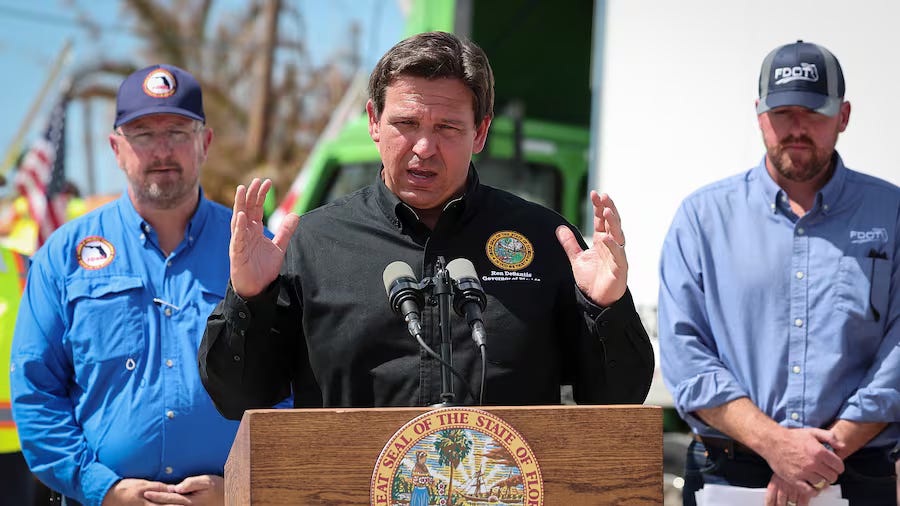#392: We Hire Managers, We Hope for Leaders
"How Leaders Emerge from the Chaos: Real-Life Examples of Crisis Leadership"
Imagine you're not just casting a vote or signing off on a hire but placing a bet on potential. We don't merely elect or hire leaders; we're appointing managers with the unspoken expectation that they'll morph into leaders when the storm hits. No matter how well-oiled, every organization will eventually face its unforeseen crisis. In these critical moments, the veneer of management peels away, revealing whether authentic leadership was lurking beneath all along.
In the best-case scenario, we hire a CEO or manager for a significant period, and there are no major crises to worry about. What do we need from that person then? It’s to be an excellent and effective manager. If we have a sloppy manager with a great vision, we often fall short of attaining that vision because we can’t manage the team.
Don’t get me wrong—it is great when we find those with the vision and management skills needed to be great leaders and managers. But they are rare and hard to find. So what should we focus on? If your company is in decent to good shape and you have an opening, look for someone with all the outstanding qualities to be a good caretaker of the business.
There are notable examples where caretaker managers have risen to the occasion during crises, transforming their roles and reputations into those of visionary leaders. Here are a few compelling cases:
1. Howard Schultz at Starbucks:
Background: In 2008, during a significant economic downturn, Howard Schultz returned to Starbucks as CEO. At the time, the company faced declining sales and a dilution of its brand due to rapid expansion.
Crisis: Schultz was initially seen as a caretaker returning to salvage the brand he had nurtured.
Leadership Transition: He closed all U.S. stores for three hours to retrain baristas in the art of espresso, reinforcing the company's focus on customer experience. He also closed underperforming stores, cut back on new openings, and launched Pike Place Roast to reconnect with Starbucks' roots. These bold moves saved the company and revitalized its brand image, showcasing Schultz's transformational leadership in a crisis.
2. Alan Mulally at Ford:
Background: When Alan Mulally was hired in 2006, Ford was in dire financial straits, with severe losses and a cumbersome bureaucratic structure.
Crisis: Ford was on the brink of bankruptcy, similar to its rivals GM and Chrysler, which later went through government bailouts.
Leadership Transition: Mulally implemented a "One Ford" plan, focusing on global vehicles, streamlined operations, and a complete cultural overhaul. Mulally’s transparent, data-driven management style and calm demeanor during financial turmoil turned Ford around without the need for a bailout. His leadership during this crisis saved Ford and positioned it for future success, earning him the reputation of a turnaround maestro.
3. Frederick W. Smith at FedEx:
Background: Fred Smith, the founder of FedEx, had to step back into a more active management role in the late 2000s when the global economic crisis hit.
Crisis: The financial crisis affected global shipping, leading to a drop in demand and profitability challenges for FedEx.
Leadership Transition: Smith is focused on cost-cutting, innovation in logistics, and maintaining service quality. His strategic vision during this period, including investments in technology and global expansion when others were retracting, kept FedEx resilient and ahead of competitors, turning a potential downfall into a story of resilience and growth.
4. Indra Nooyi at PepsiCo:
Background: Indra Nooyi became CEO of PepsiCo in 2006, when the company was already a giant but was facing pressure from health trends against sugary drinks.
Crisis: The shift in consumer preferences towards healthier options posed a significant challenge to PepsiCo's core products.
Leadership Transition: Nooyi spearheaded a transformation towards healthier products with the "Performance with Purpose" initiative. She navigated PepsiCo through this health-conscious era by diversifying the product portfolio, including acquisitions like Quaker and Tropicana, and launching healthier snack options. Her foresight and strategic direction during this transition addressed the immediate crisis and positioned PepsiCo for long-term sustainability.
5. Satya Nadella at Microsoft:
Background: Satya Nadella took over from Steve Ballmer in 2014 when Microsoft was seen as lagging in mobile and cloud computing.
Crisis: Microsoft needed a drastic shift in its strategy to stay relevant in a rapidly changing tech landscape.
Leadership Transition: Nadella introduced a growth mindset culture, embracing the cloud with Azure and focusing on AI and productivity with tools like Office 365. His leadership during this transition not only revived Microsoft's standing in the tech world but also transformed the company into a leader in cloud services and AI.
These examples illustrate how caretaker managers when faced with critical challenges, can morph into dynamic leaders by embracing vision, strategic innovation, and cultural transformation. They manage through crises and lead their organizations into new eras of success.
What inspired this blog?
This is what a solid management-turned-leader looks like in politics. Ron DeSantis is not considered a visionary or a master of inspiration. However, no one in Florida has been unhappy with his leadership over the past several weeks. He is a master of process and procedure, rising above the tide when given a crisis.
When you get your ballot this year, remember you are electing managers who may have the opportunity to lead. But they need to be solid managers first and foremost.





